Abstract
The person buying a house doesn’t get to share his opinion on the design.
It is between the architect and the developer.
Designing a house or a building is a conversation between the architect and the client and the decisions taken are mutually by them. But the end-user or the person buying the house has very little say in the design. In other words, the buyer doesn’t get what he wants and settles for the already built environment. Superstar Architects being experienced and educated make mistakes in their designing which can be avoided by letting people participate in the designing process. This research looks at how democratic participation can be implemented in the process of designing by looking into the ideologies by Jacques Ranciere of democratic participation.
The word democracy designates neither a form of society nor a form of government. “Democratic society” is never anything but a fanciful picture intended to support one or another principle of good government. Societies, today as yesterday, are organized by the play of oligarchies. It is not democracy’s way to adapt to modern times and vast spaces. It is, by rights, an oligarchic form, a representation of minorities who are entitled to concern themselves with common affairs. Jacques Ranciere’s perspective, democracy is the process of this perpetual bringing into play, this invention of forms of subjectification and cases of verification that counteracts the perpetual privatization of public life.
As for the concept of democracy, Jacques Ranciere states three aspects of it, including an expression of community, a unity of the people and destruction of the dispute among people. Apart from democracy, the technique is also important for the participatory process, which aims to make the people become a real part of the project instead of a passive receiver of the government’s or designers’ decisions.
In terms of Architecture, democracy is a manifestation of the intimate relationship between the nature of the individual and the nature of the city. Democratic design means a participatory design that has three distinctive principles including democracy and democratization, values in design and imagined futures, and conflicts and contradictions in design. The characteristic of participatory design is promoting mutual learning between users and designers.
Nowadays we see instead of having physical interaction to develop a design, many people are making social media their design platform. As a result, the concept seems inoperative to collect a well-defined argument. So, in this assignment, we would like to propose a concept of merging architectural conceptual framework and its graphic methodology which opens a new path for analysing games and the environment to develop a new platform as a design tool. Digital platforms can make future occupants who fully know their needs, requirements and desires productively engage in design by opening processes.
Gaming interaction
The form of games is one kind of Digital Participatory Process (DPPs), which has shown great potential to democratize the architectural design process and develop the local community. Games can not only democratize the architectural design process but also help participants interact with each other to build a strong relationship between inhabitants. In addition, to engage with the processes driving the development of built and infrastructural fabric, games offer the opportunity to explore the principles and aesthetics behind the design theories that have shaped our physical environments.
Analyze how we can make a game as a democratic design tool, we study Jacque Ranciere’s key concept towards architecture development. An aspect we required to make gaming concept as a participatory tool for architectural design. The key concept is- Expression of Community; Unity among People; & Destruction of Disputes. Also, we look through some game concepts which work with real-world interaction for eg: Pokemon Go and SIMs 4. Architecture perspective there is 2 project of ¨Jose Sanchez¨ – BlockHood & CommonHood.
Later we had a critical study of all project & game concepts on the key characteristics of the Ranciere digital democratic design tool (mostly based on human interaction and opinions). As a result, different from the traditional communication way, a platform-based virtual community breaks the obstacles of time and space, and it becomes the best way for inhabitants to learn about their neighbours. Inhabitants can build an intimate relationship with each other through a game platform.
Conclusion
The advent of the digital age accelerated the transmission and use of information, and data has become increasingly important. Digital participatory platforms allow users to generate content, and the content is available for all members of the community. DPPs can build an online repository for virtual communities, and citizens can discuss problems and propose solutions.As a result, we would like to make a platform or a conceptual model where the designer can specify game goals and plotlines to develop an architectural design and control how the environment entities can be used to achieve these goals.
Presentation
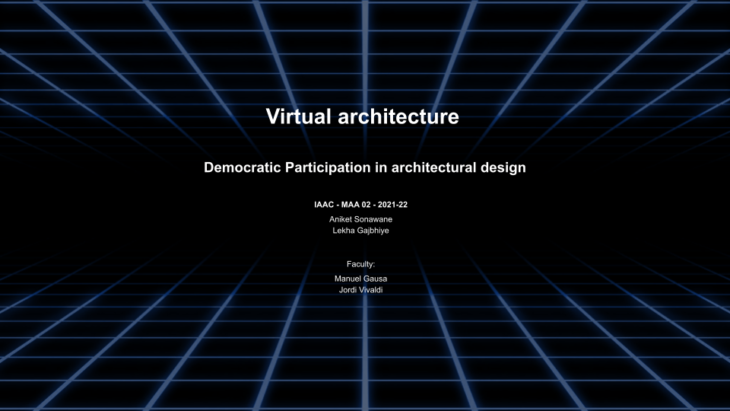
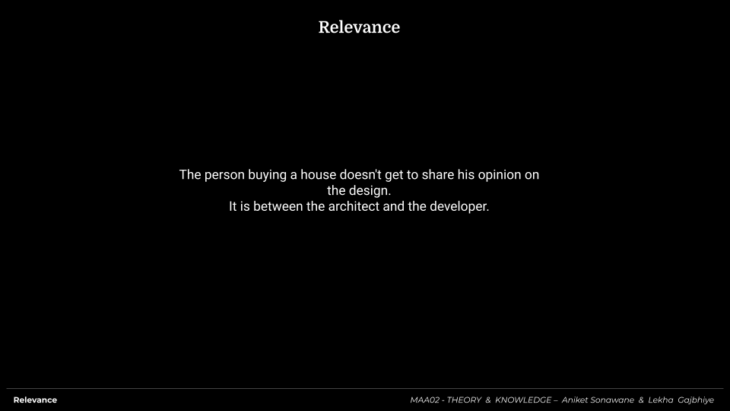
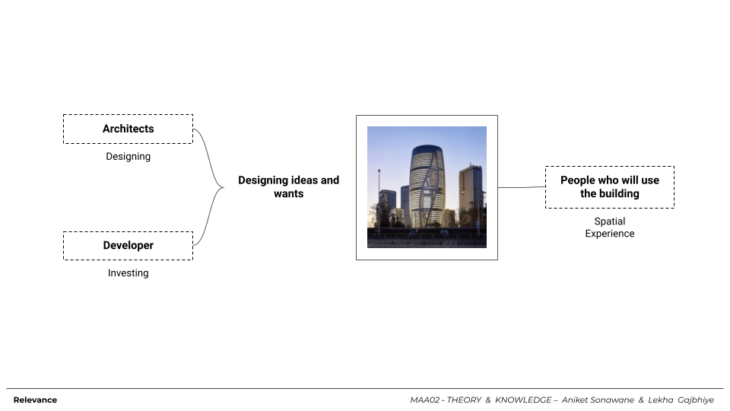
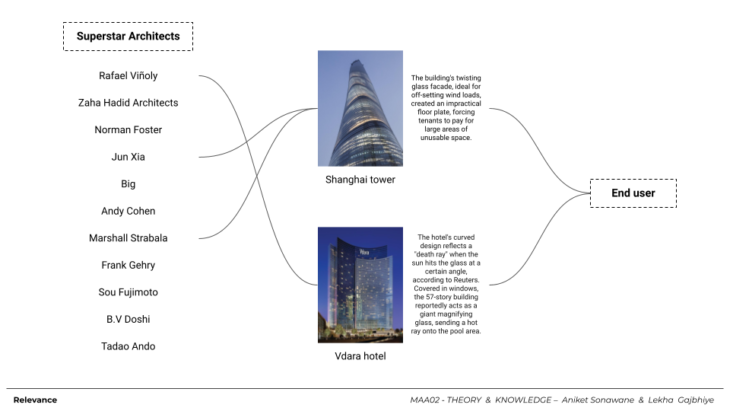
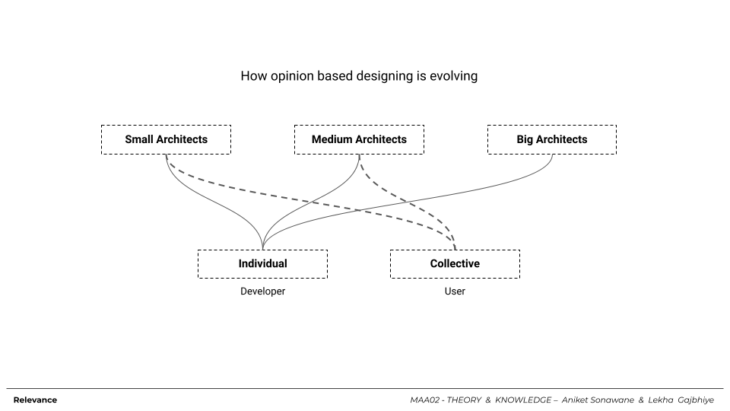
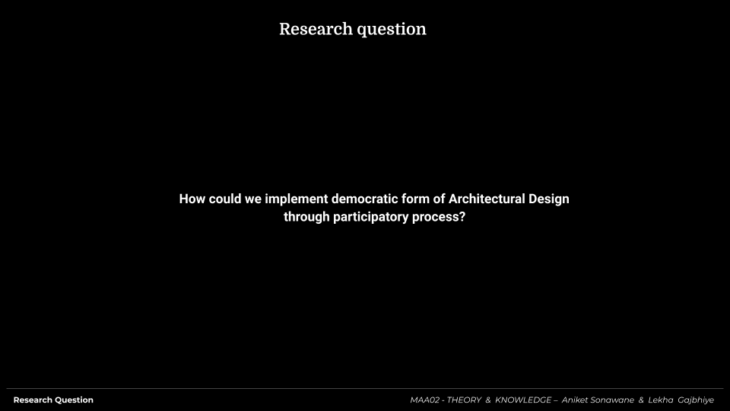
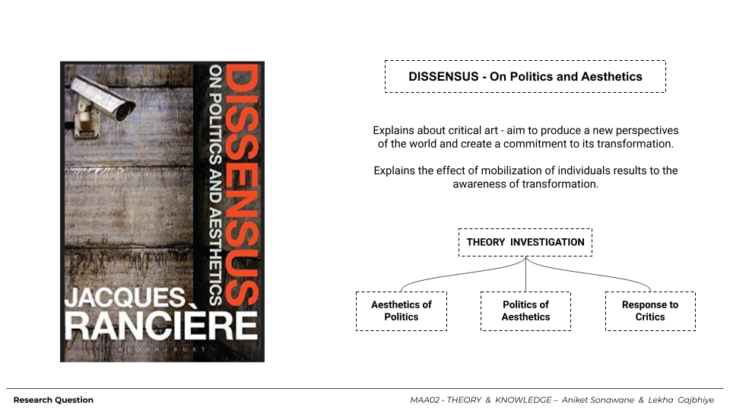
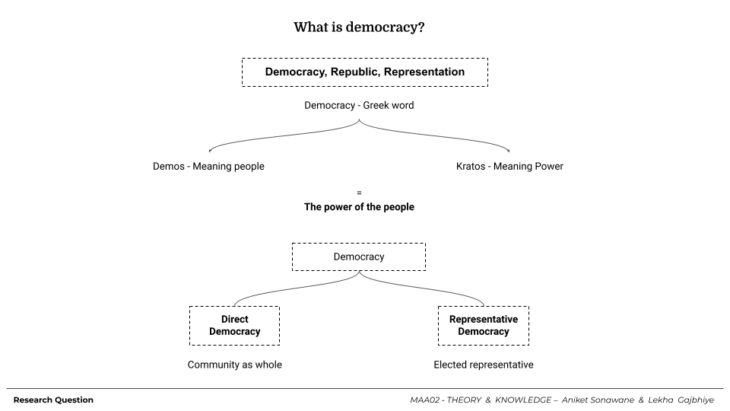
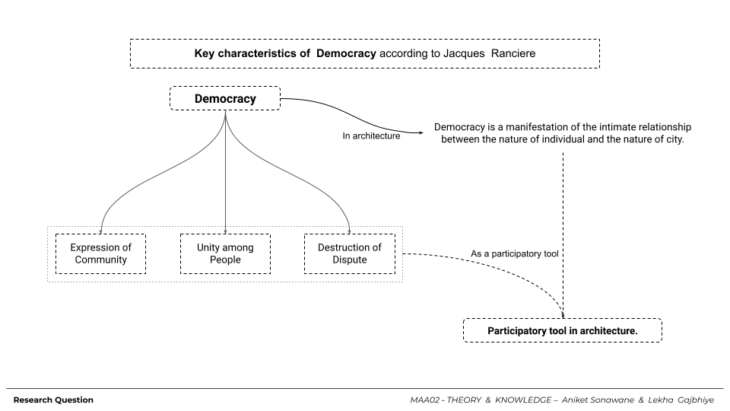
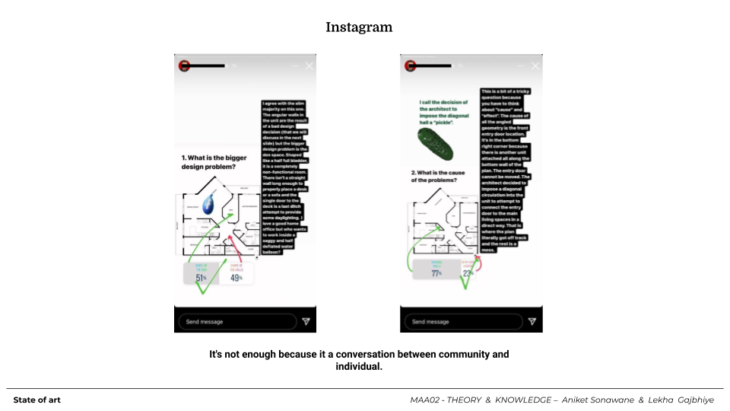
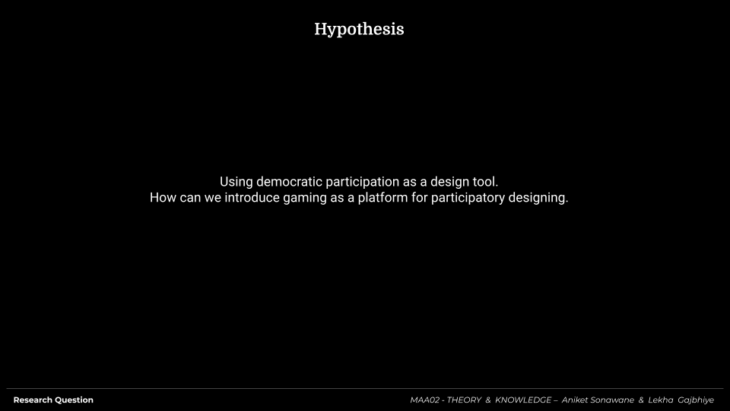
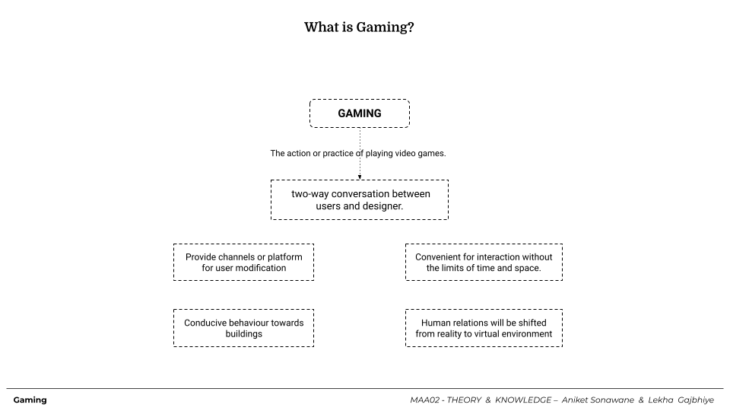
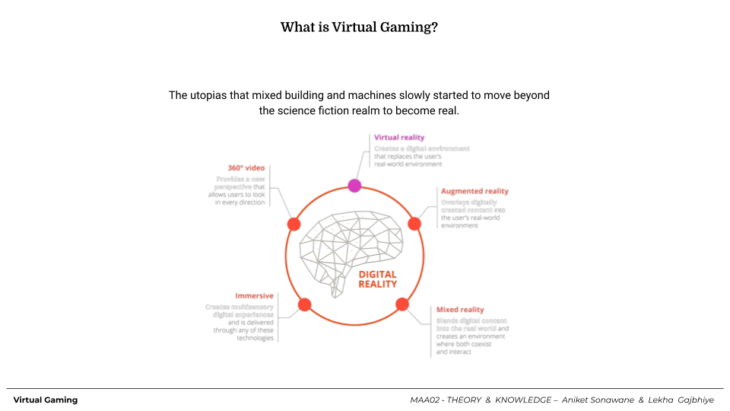
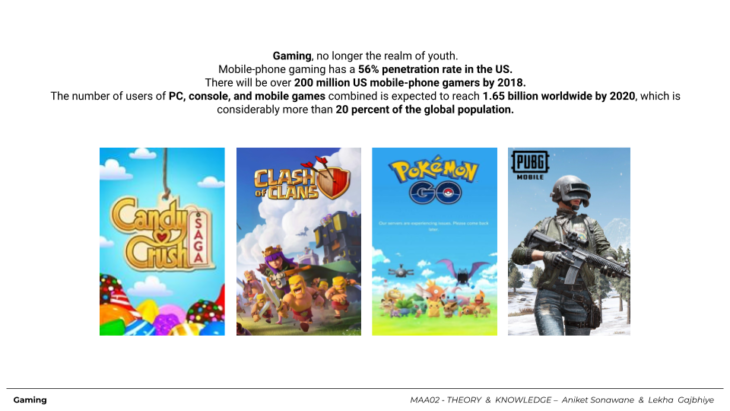
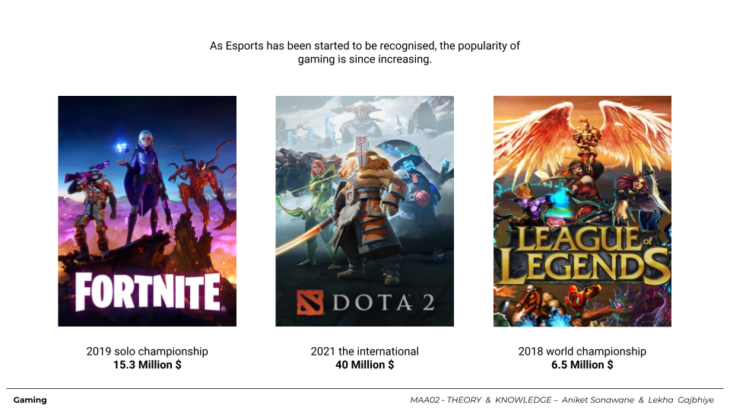
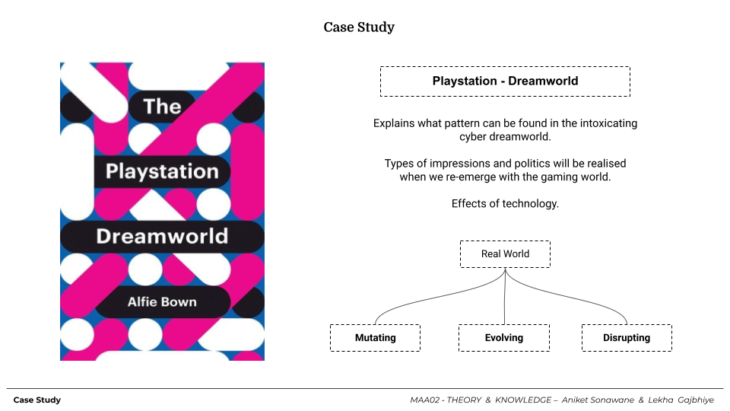
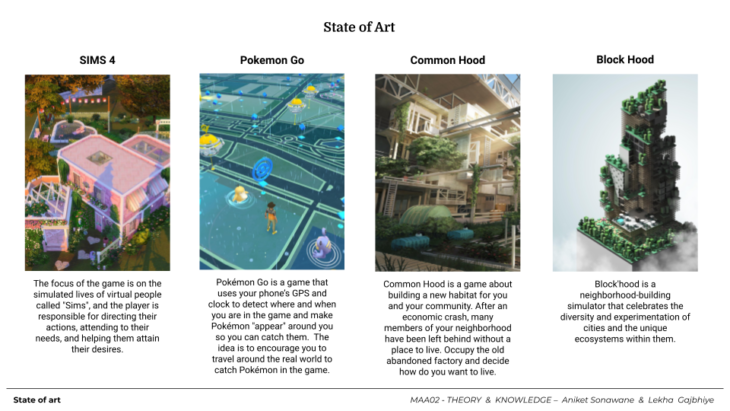
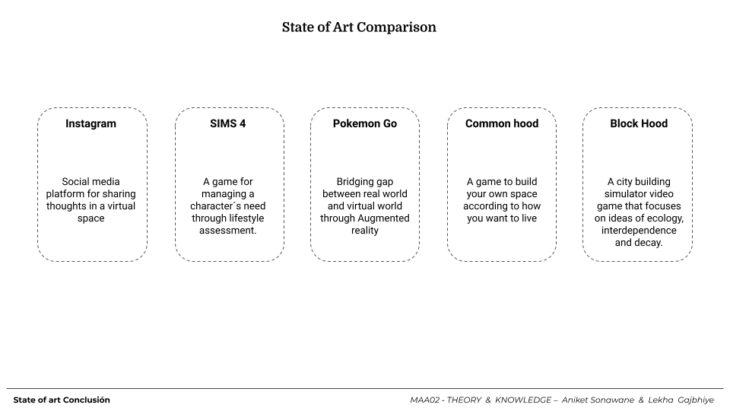
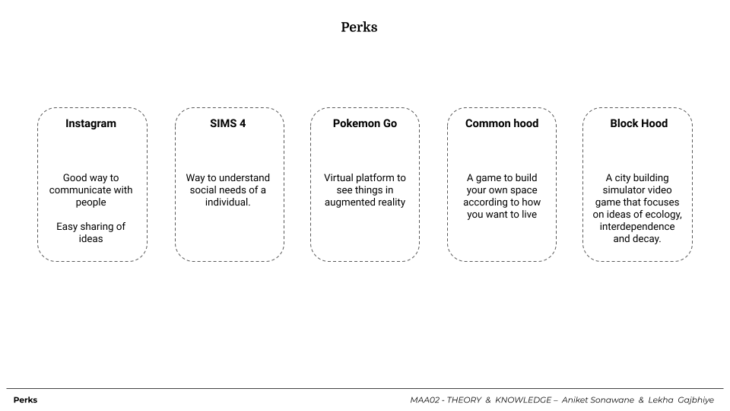
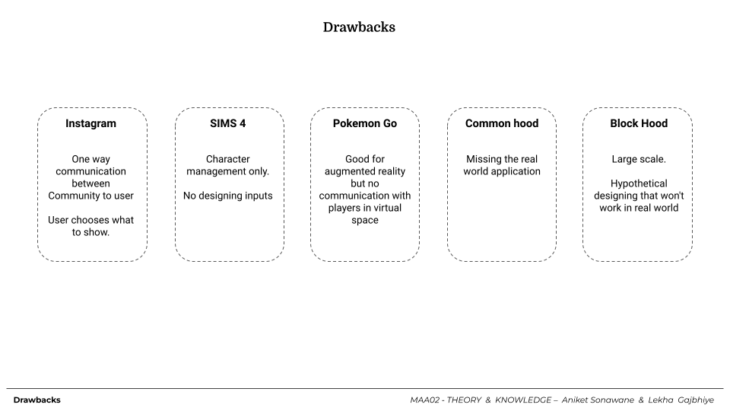
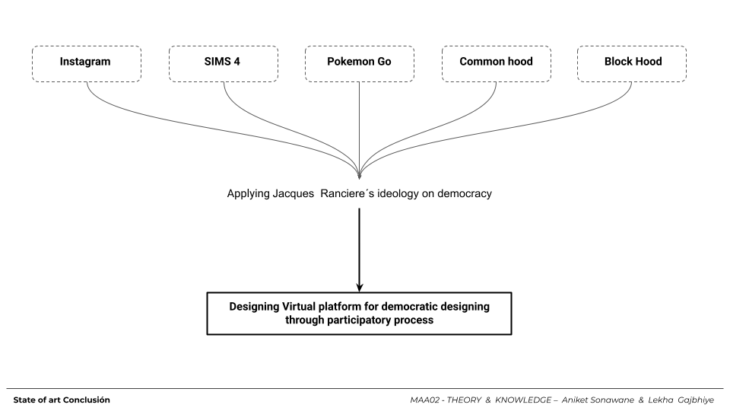
CREDITS
Virtual architecture // Theory and knowledge is a project of IAAC, Institute for Advanced Architecture of Catalonia developed in the Master in Advanced Architecture 2021/22 by Students: Aniket Sonawane, Lekha Gajbhiye
Faculty –Jordi Vivaldi, Manuel Gausa